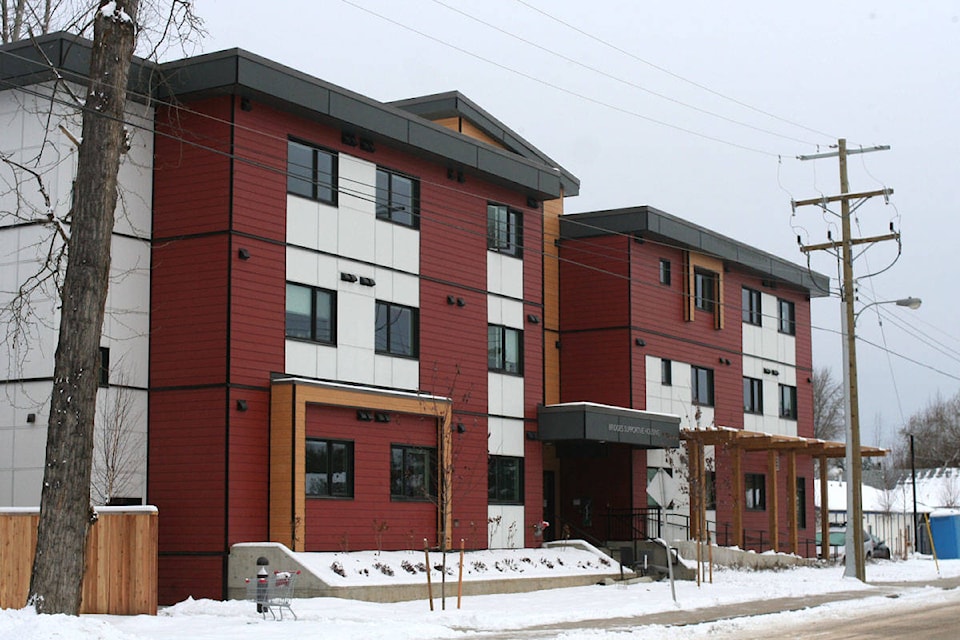On December 21, 2020 a resident at Bridges Supportive Housing in Quesnel died alone in his room due to a drug overdose.
The Quesnel Shelter and Support Society (QSSS), which operates the building with support from BC Housing, is working on a project to make sure that never happens again.
“This was a really tragic loss for our community and for our organization,” Melanie MacDonald, executive director for QSSS said.
READ MORE: Supportive housing now open in West Quesnel
MacDonald asked Quesnel city council to support a prototype device that could prevent overdoses through technology at an April 20 council meeting.
The resident’s father and a QSSS board member have been working with current and graduated UNBC computer science students, Josh Muir and Jenny Li, to develop a wearable wristband that would track a drug user’s oxygen levels.
If a user’s oxygen level dropped too low, a key indicator of an overdose, an alert would be sent by a wearable wristband to a microcomputer inside the tenant’s room to support staff or emergency services.
“We know nothing is foolproof, but we need more in order to prevent further loss,” MacDonald said.
MacDonald said staff at QSSS reversed 115 overdoses between March of 2020 and March of 2021. In the previous year, they had only reversed 25, a sign of an increasingly toxic illicit drug supply.
“A big part of this is making something easy and comfortable for the people to use, and want to use,” Muir said. “We want to create a system that would preserve the privacy of residents when they’re not in danger, but alert Bridges’ staff if there is danger.”
Muir and Li asked council for funding to develop a prototype system, which could be scaled up with more devices if proven successful. The total cost of the project would be $25,000, with all but $1,000 of the price tag related to developing the software. They said the prototype could be ready within three months.
Quesnel Mayor Bob Simpson noted the project could be funded through the COVID-19 safe restart grant, as it is a project to support a vulnerable population.
Councillors were quick to dream big, proposing ways the project could be expanded beyond Bridges, to others in the community who are using drugs alone.
“The number of overdoses and the drug toxicity level during the COVID-19 pandemic have increased significantly,” MacDonald said. “We know the majority of overdose deaths across our country, are happening behind closed doors when people are alone.”
MacDonald said the project in Quesnel would be the first of its kind, adding similar projects are in place at other supportive housing buildings. None of those have a wearable component. A wearable device was the option most preferred by Bridges tenants.
Coun. Ron Paull asked if there was a concern if devices like this could induce a false sense of security in a drug user.
“I think we’re constantly having a conversation with folks around using small amounts, being careful, using the buddy system,” MacDonald said. “I don’t think anyone feels any sense of safety. I think they have a really deep understanding of the toxicity of the drug supply right now.”
Council will receive a staff report next month recommending what actions they should take.
READ MORE: CSUN rallies on overdose crisis anniversary
Do you have something to add to this story, or something else we should report on? Email: cassidy.dankochik@quesnelobserver.com
@GimliJetsMan
cassidy.dankochik@quesnelobserver.com
Like us on Facebook and follow us on Twitter.
